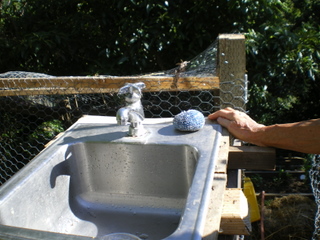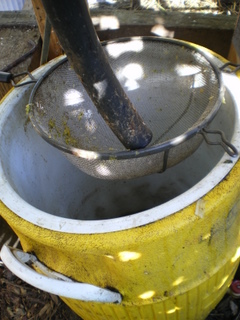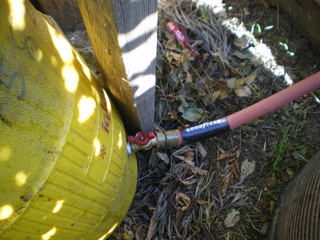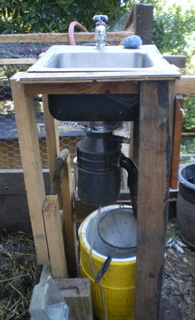 Okay, I have promised MacGyver-type solutions on this site, and here is the first one (if you don’t count the bee egg, which I didn’t invent): the amazing, fabulous, original compost and chicken food grinder, made for a total of under $100 out of a used stainless sink, a used heavy duty garbage disposal, and a new faucet and water line from the hose. You can read this or see it live, captured by my amazing friend and documentarian extraordinaire, Yeh Tung.
Okay, I have promised MacGyver-type solutions on this site, and here is the first one (if you don’t count the bee egg, which I didn’t invent): the amazing, fabulous, original compost and chicken food grinder, made for a total of under $100 out of a used stainless sink, a used heavy duty garbage disposal, and a new faucet and water line from the hose. You can read this or see it live, captured by my amazing friend and documentarian extraordinaire, Yeh Tung.
Compost is pretty simple: kitchen scraps, garden waste, straw or leaves and if you have some animal manure, great! Layer it, water and turn it from time to time, and wait. This is fine if you have unlimited space and time.
The problem is, if you have a small area, there is always too much compost and it takes too long to break down, so there are always more kitchen scraps and garden waste than there is space. Even if you import extra worms, as I did.
Over the years I’ve tried plain, unprotected heaps (attracts rats, raccoons, possums and skunks), drums and plastic compost houses (fill up too fast), and even an expensive machine from Nature Mills that turned kitchen scraps in to a wet smelly mess that was too stinky for inside and attracted flies and bred maggots outside.
My solution is the amazing, easily home built compost buster, made from a garbage disposal. For my prototype, I simply cut a hole in a piece of plywood, set it on a 2×4 stand, screwed the disposal onto it and put a bucket underneath. I used an extension cord and plugged the disposal in to turn it on. I put a strainer on top of the bucket, and used a hose to provide water.
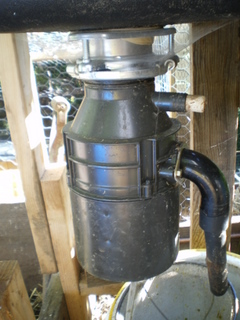 Once I proved to myself that the concept worked (despite all advice to the contrary!), I added a length of old bicycle tire inner tube to the exit of the disposal, and put a cork in the intake valve. I added a sink, a faucet, and a big used Igloo container with a hose bib in place of the drink-dispensing valve.
Once I proved to myself that the concept worked (despite all advice to the contrary!), I added a length of old bicycle tire inner tube to the exit of the disposal, and put a cork in the intake valve. I added a sink, a faucet, and a big used Igloo container with a hose bib in place of the drink-dispensing valve.
The raw material goes into the sink, gets ground up in the disposal and drains into the strainer. The water goes into the cooler. I added a switch to turn the disposal on and off.
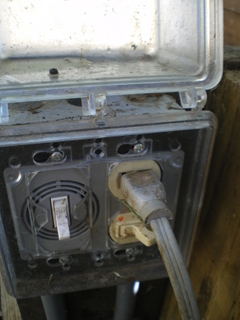 If it’s stuff the chickens will eat, I give the mash to them. This eliminates the litter of rinds and cobbs they usually leave. I make a mash of kitchen scraps. I also let them eat corn cobs and rinds down to the nubs and then take the rinds and cobs out to mash up for the compost along with garden waste, citrus, and onions, where the worms make it into compost practically overnight. The nutrient-rich water goes onto the vegetable garden.
If it’s stuff the chickens will eat, I give the mash to them. This eliminates the litter of rinds and cobbs they usually leave. I make a mash of kitchen scraps. I also let them eat corn cobs and rinds down to the nubs and then take the rinds and cobs out to mash up for the compost along with garden waste, citrus, and onions, where the worms make it into compost practically overnight. The nutrient-rich water goes onto the vegetable garden.
Effective, efficient, and as noted, has a certain (at least to me) poetic elegance of design.
